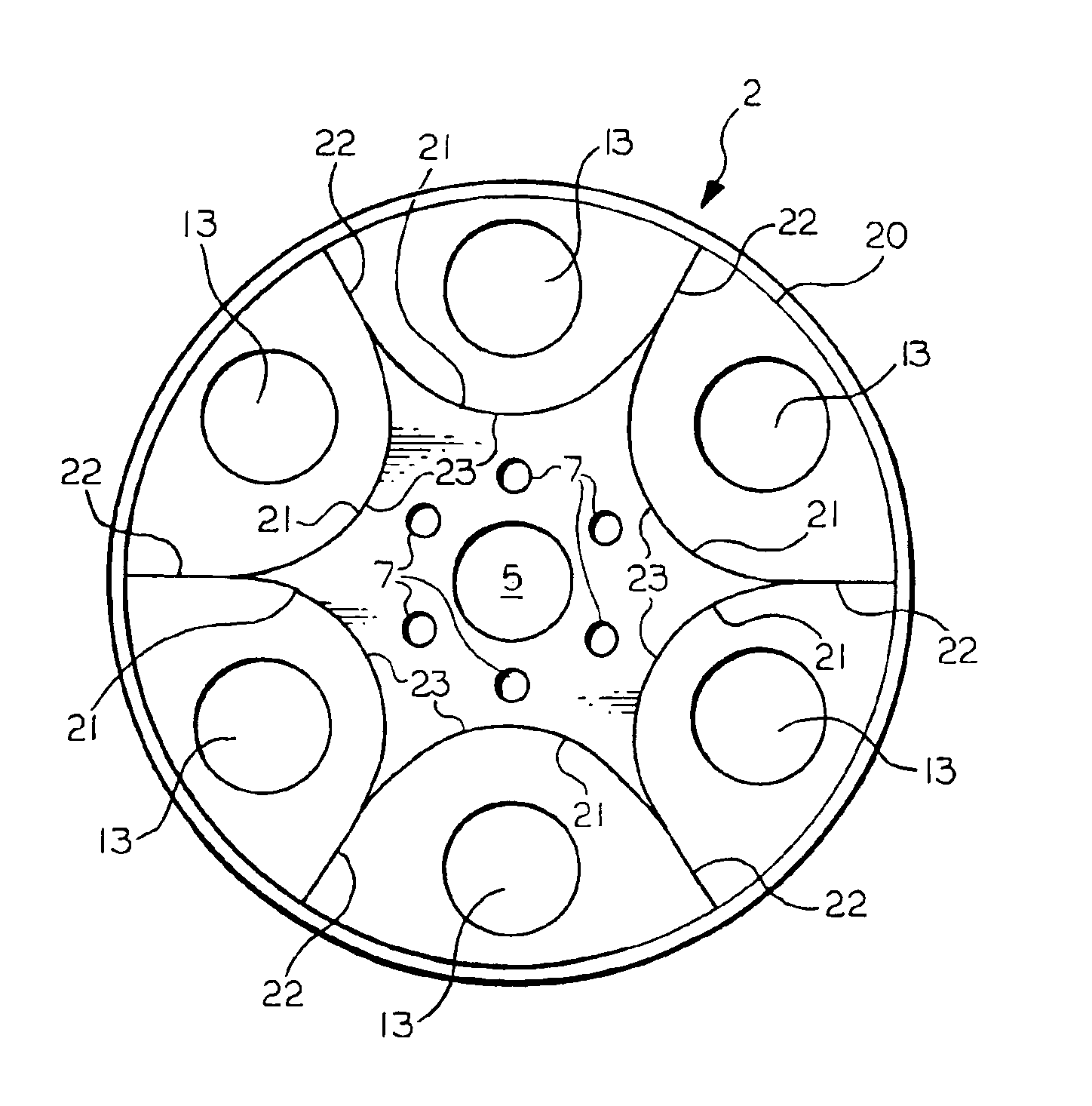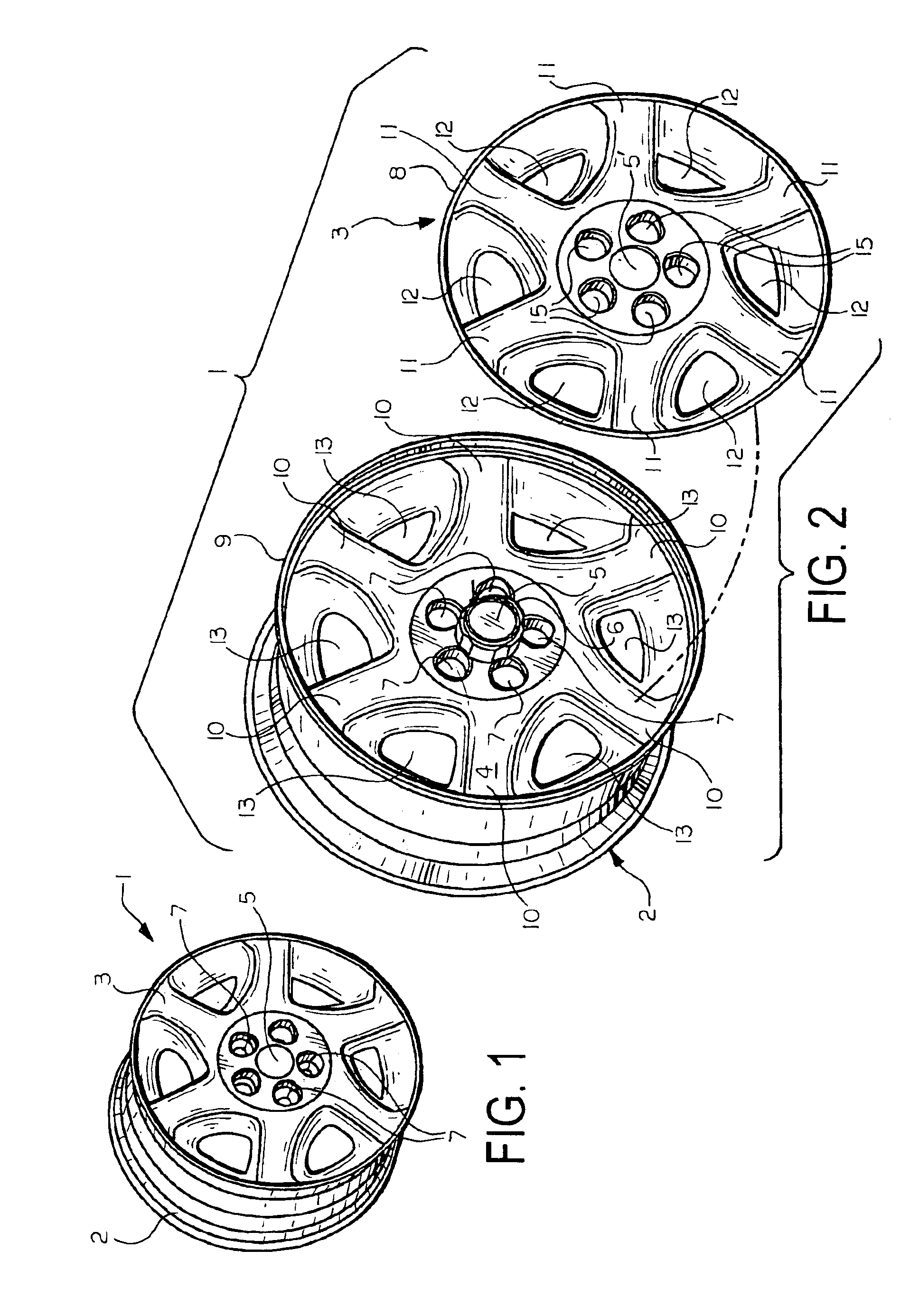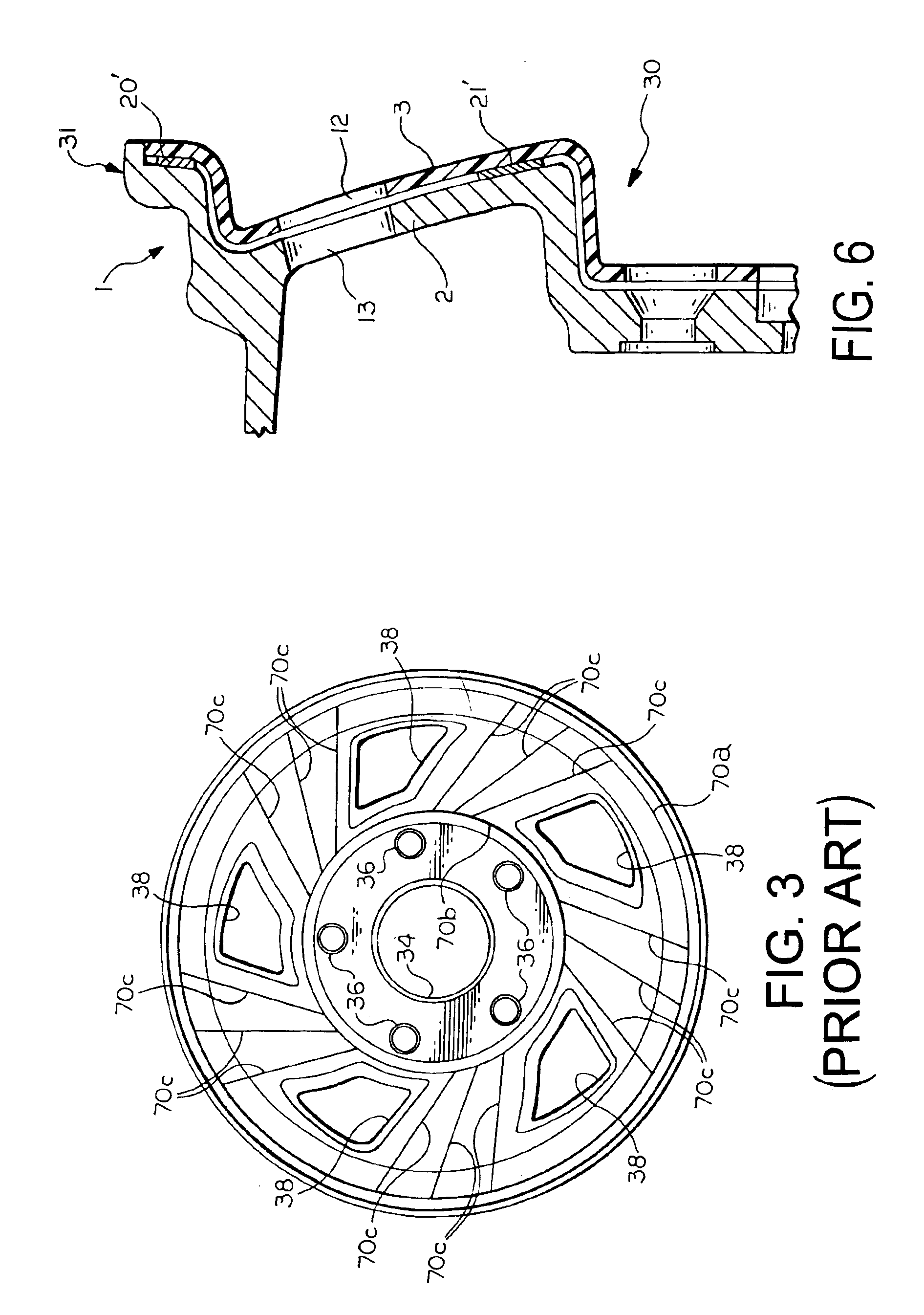Adhesive patterns for vehicle wheel assemblies
a technology for adhesive patterns and wheels, applied in the field of adhesive patterns for vehicle wheel assemblies, can solve the problems of affecting the cure time of wheels, the use of adhesives, and the continuous coating of adhesives between wheels
- Summary
- Abstract
- Description
- Claims
- Application Information
AI Technical Summary
Benefits of technology
Problems solved by technology
Method used
Image
Examples
Embodiment Construction
[0030]FIG. 1 is a perspective view of a wheel assembly according to one embodiment of the present invention. The wheel assembly which is generally identified by reference numeral 1 includes a wheel 2 that can be made of aluminum, magnesium, steel, or other material conventionally used for manufacturing vehicle wheels. A decorative wheel cover 3 is bonded to the otherwise outer exposed surface 4 (See FIG. 2) of wheel 2. The wheel cover 3 is a solid panel of a high-impact plastic that has a high temperature resistance or can be a thin metallic panel such as stainless steel that, in either case has a finished outer surface that can be painted, textured or plated, e.g. chrome plated as desired. An advantage of using a high-impact plastic material such as a combination of polycarbonate and ABS having is that wheel covers 3 made from such materials can be injection molded.
[0031]Wheel 2 is of the type which includes a small central opening 5 in the wheel hub 6 and a plurality of exposed lu...
PUM
 Login to View More
Login to View More Abstract
Description
Claims
Application Information
 Login to View More
Login to View More - R&D
- Intellectual Property
- Life Sciences
- Materials
- Tech Scout
- Unparalleled Data Quality
- Higher Quality Content
- 60% Fewer Hallucinations
Browse by: Latest US Patents, China's latest patents, Technical Efficacy Thesaurus, Application Domain, Technology Topic, Popular Technical Reports.
© 2025 PatSnap. All rights reserved.Legal|Privacy policy|Modern Slavery Act Transparency Statement|Sitemap|About US| Contact US: help@patsnap.com



